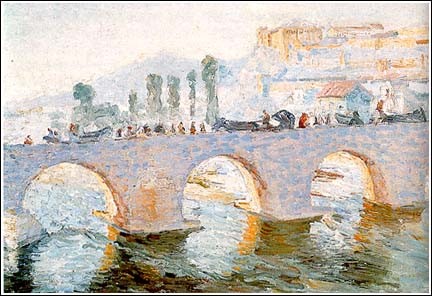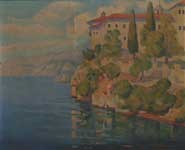Born on 19.10.1876 in Krushevac, died on 15.08.1946 in Belgrade. Milan Milovanović was extraordinarily educated artist when compared to his contemporaries. He went through five different art schools, graduated two academies and had nearly ten different teachers: pupil of Kiril Kutlik 1895-96, A. Azhbe 1897, Munich Academy of Fine Arts whеre he graduated in 1902, Academy Kolarosi and Academy of Fine Arts in Paris 1902-1906. Paintings that he made while he was in south of Serbia, Macedonia and Mount Athos , and later on island of Capri, are some of the most representative examples of Impressionism in Serbian art. Milovanovic studied Serbian Midle Age monuments from the Turkish period on the Balkan Peninsula around 1908. The Serbian historical legacy has left a strong impact on his inspiration. He was an official Serbian war painter in the period 1916-1918. Worked as a professor at the State Art School in Belgrade until 1933.
Milovanovic visited Macedonia for the first time in 1907 touring the local monasteries, and later in 1917/18 as a war painter. His painting “The bridge of Emperor Dushan in Skopje 1907” can be found in the Museum of Modern Art in Belgrade, which is a unique “Monet”-like example of Serbian impressionism. Also, the painting “St. Naum Monastery” is in the art collection of the Serbian Parliament

